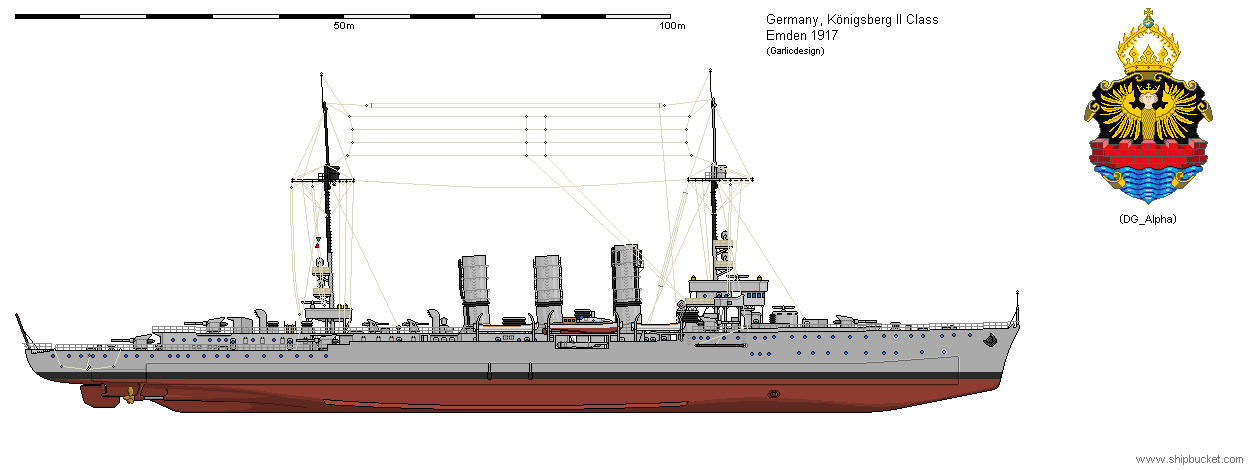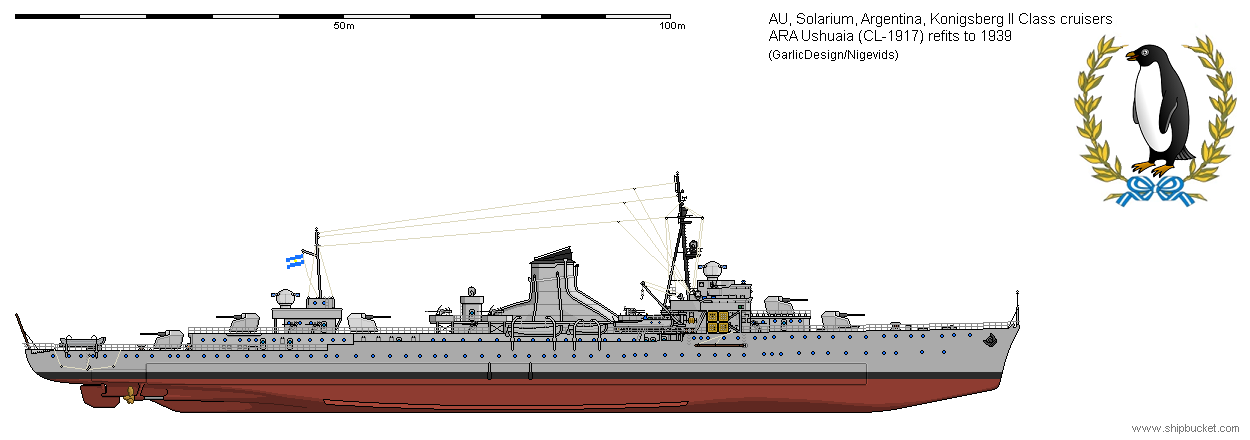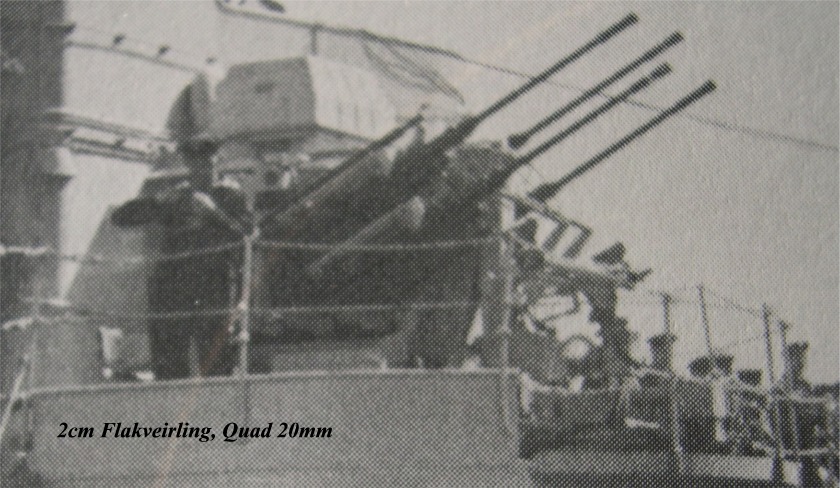
ARA Ushuaia (CL-1917)
The Ushuala class were the most modern cruisers in the Argentinian Navy when the first two were received in 1921. Like the other Germanic States ships the two cruisers had been purchased from the Allied War Reparations Commission. The purchases had been started by the Chileans receiving their reparation package from the British for the appropriation of Chiles two dreadnoughts that became the Canada and Eagle. The Brazilians also got in on the act as they could not let Chiles new ships and then the Argentinian purchases leave them behind in the latest South American Arms race.

The four ships were less than 5 years old when received, so no major upgrades
were contemplated till the 1930's. Other priorities would be put before these
vessels ever got to the major docks. It was not until 1936 that the Ushuaia and
its sisters were taken in hand for modernisation. A small digression. The
Argentinians were looking around the worlds navies (that is what Naval Attache's
in embassies are for) to find out what was going on, the latest trends. In the
Commonwealth nations the older Town and C type cruisers were being converted
with 4" AA guns to Anti-Aircraft ships. This was something the Germans were also
contemplating doing to their older cruisers of the same age as the Ushuaia. The
Germans had the problem that the dual-purpose weapon they were developing for
the Scharnhorst, Hipper, and Bismarck classes, the tri-axial twin 4.1" mounting,
was far too large and heavy to be fitted to the older cruisers and later
destroyer types. Something else needed to be developed. The gun chosen was a
joint development between the Army, Air Force, and Navy (one of the few times
this ever happened), the 88mm AA gun in various versions (the original 1918 AA
version was a Naval 88mm gun fitted to an AA mounting). The version we are
interested in is the Naval, twin turret mounted, 88mm L56/36 weapon. This gun
had a service ceiling of 9500 meters (31,000 feet) and a surface range of 17,000
meters (18,600 yards) with an 11kg shell at 12-15 rounds per minute. It was also
an extremely accurate gun. The British 4" (102mm) did outperform the 88 but not
by as much as you might think. The 4" only fired 19,400 yards.

The further the Argentine designers went with the plans for these ships
conversions, the more extensive the changes to the internal and external layouts
was required to be. One of the biggest changes was the need for a lot more space
for shell stowage for the 88mm guns. Firing at a minimum of 10 rounds per minute
it would take ten minutes to go through a standard 100 rounds per gun load. This
was not acceptable. Ammunition stowage of 350 rounds per gun was deemed
necessary. New fore and after bridge structures were required to take the two
new dual purpose gunnery directors. The most striking change was the trunking of
the three funnels into one. Beside the five twin 88's, there were three twin
37mm (later increased to five), and finally room was found for fourteen 20mm
auto-cannons in one quad (later increased to three) and ten singles. The engines
had been converted to oil firing during the late 1920's.

| Displacement | 6,200 tons std, 7,650 tons full load | |
| Length | 497 ft | |
| Breadth | 47 ft | |
| Draught | 20 ft | |
| Machinery | 2 shaft Steam Turbines 35,000shp | |
| Speed | 28 knots | |
| Range | 5500 miles at 12 knots | |
| Armour | 2.6" side, 1.5" deck, 1" turrets | |
| Armament | 8 x 5.9" (8x1) 4 x 3.4" (4x1)
|
10 x 88mm (5x2) 6 x 37mm (3x2) 14 x 20mm (1x4, 10x1) |
| Torpedoes | 4 x 21" (2x2) | nil |
| Complement | 460 | |
| Notes | ARA Ushuaia (ex Dresden II) ARA Gallegos (ex Koln II) ARA Viedma (ex Fraunlob II) ARA Olavarria (ex Magdeburg II) |
|

As completed with side by side 5.9" mounts at the bow positions. Below: my original drawing.